The ASUS Vivobook Pro 15 OLED Review: For The Creator In All Of Us
by Brett Howse on March 7, 2022 8:30 AM ESTWireless
ASUS does offer the Vivobook Pro 15 with Wi-Fi 6, however they also (oddly) have a Wi-Fi 5 option, and unfortunately that is what arrived in the review unit. The good news is that it is the Intel Wireless-AC 8265 network card which is one of the best Wi-Fi 5 devices around, with good performance and solid drivers.

The outright transfer speeds are well shy of what modern Wi-Fi 6 network cards can achieve. This is one area where AMD struggles. Intel has their Evo platform and integrates things like Wi-Fi 6 into the processor package. AMD, with its fewer resources over the last decade, has not focused on wireless networking. That has been changing recently and hopefully AMD will be able to overcome this deficit soon.
Audio
ASUS outfitted the Vivobook Pro with Harmon Kardon speakers. As with all laptop computers, there are physical limits which come into play since the fundamental requirements of a good speaker – size and weight – are extremely limited in any laptop.
The laptop hit about 80 dB(A) measured one inch over the trackpad. That is certainly loud enough, although the low-end of the spectrum was of course lacking.
Thermals
The Ryzen 7 5800H is rated at a 45 Watt TDP, and the included NVIDIA GeForce RTX 3050L Max-Q adds another 35 Watts to the mix, with a 50 Watt dynamic boost to tap into. That is a fair bit of heat to deal with for a thin and light notebook like the ASUS Vivobook Pro 15.
ASUS offers some power profiles that the owner can choose from to set the performance and noise levels as well. The Performance Mode bumps the TDP up to around 54 Watts on the CPU, whereas the Standard Mode scales it back to 35 Watts to reduce the noise level. The differences are dramatic, with the laptop in Performance Mode hitting a very high 55 dB(A) measured one inch over the trackpad, which is quite loud indeed. If you have work that needs to get done quickly, this is certainly the way to go, but as always on a thin device, the trade-off is noise.
At maximum performance in the advertised 54-Watt mode, the CPU averages around 3.4 GHz sustained with no throttling taking place. The laptop fans are strong enough to compensate. Through testing, the average power level was actually around 50 Watts sustained with a 54-Watt peak.
In the Standard Mode, ASUS still provides the same 54-Watt peak, which quickly drops to a 45-Watt level for a couple of minutes before further dropping to 35 Watts sustained power to keep the noise in check. And it does work. In the Standard performance mode, SPL of the laptop is significantly reduced to around 45 dB(A) which is much easier to live with. CPU frequency averages around 3.0 GHz in this mode during sustained workloads.
Finally, ASUS includes a Whisper mode which, as you would expect, prioritizes low sound over performance. In this mode the CPU has a very short 54-Watt peak which then quickly drops to just 15 Watts sustained. Sound output in this mode is a meager 39 dB(A) measured one inch over the trackpad, which is very quiet. However, at this power level, the CPU only manages to achieve a 1.7 GHz frequency. Quiet it is, but performant it is not.
Software
ASUS software is branded as MyASUS and includes all the functionality you would expect in a modern notebook, as well as some additional settings to increase the longevity of the OLED display. It is easy to navigate and well-thought out, and it updates through the Microsoft Store which makes it very simple to keep up to date.
As discussed in the thermals section, there are three settings to set the laptop performance and noise levels.
There is also the ability to change the maximum battery charge level. This would be nice if it was included in Windows, as all laptops should offer this feature. Thankfully, most do, including ASUS. If you primarily use your notebook plugged into the wall, you can help the battery life by reducing the maximum charge level.
Since the notebook ships with its distinguishing feature of an OLED panel, there are several settings which can be enabled to extend the life of the OLED as well as maintain it. You can also set it to only focus the primary window on the display, dimming the rest, which will improve battery life. OLED care is important as the organic diodes do degrade over time, and to reap the biggest benefit of OLED you definitely want to use a dark theme in all applications.
The display also allows you to tweak the color profile and gamma settings. Out of the box, the colors are already quite strong so turning the display to its Vivid mode seems like it would be overkill.
You can also enable and disable the noise-cancelling features of the speakers and microphone.
Overall, ASUS includes lots of customization settings to tweak the notebook to what you need it to do. Some additional settings would be nice though, such as being able to set the display to a sRGB mode since most software is not going to deal well with the P3 D65 gamut. ASUS ROG laptops also include additional functionality where you can set different performance profiles for different applications – namely games – and while the separation of the ROG and the other brands does make sense, it would be beneficial to include some of that functionality in the MyASUS app.


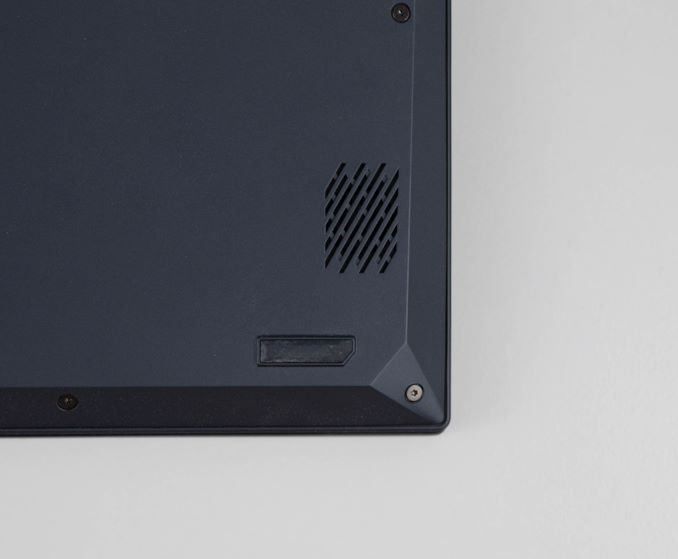


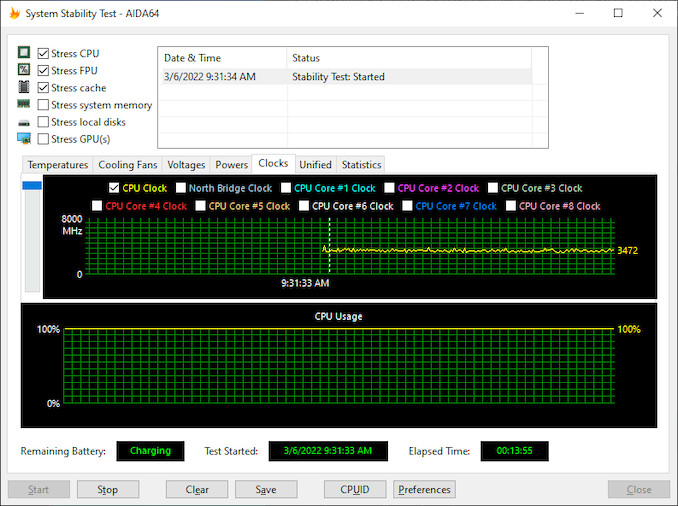
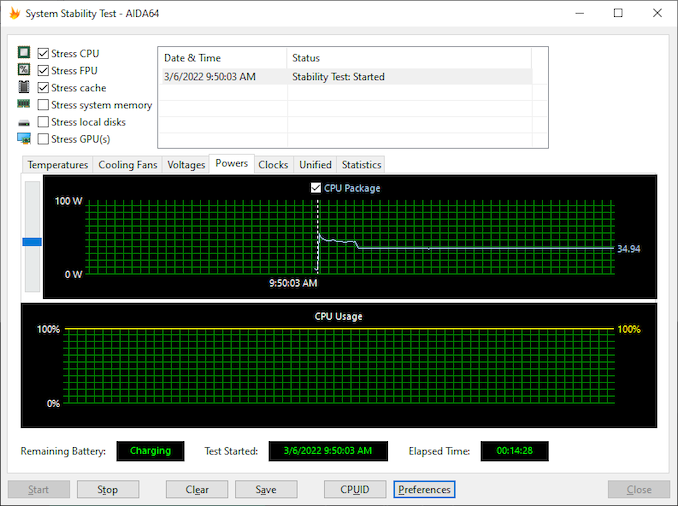
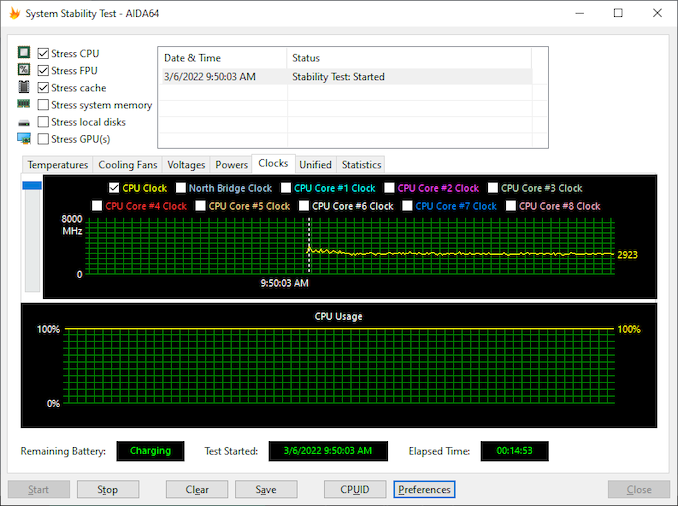


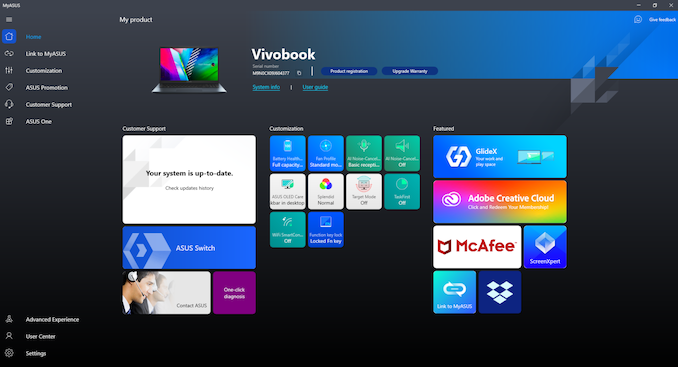













33 Comments
View All Comments
eek2121 - Monday, March 7, 2022 - link
Seems they didn't really try with higher end configurations. My Razer Blade 14 is slightly heavier at 3.94lbs, but beats this thing in everything except the OLED screen (though the refresh rate and resolution on the Razer Blade is much higher).matagyula - Monday, March 7, 2022 - link
I think it is worth pointing out that that Razer Blade 14 costs twice as much as the unit reviewed.Alistair - Monday, March 7, 2022 - link
so your laptop costs twice as much, is missing the main feature, the OLED screren, and it is miraculously faster? amazing stuff... /sbrucethemoose - Monday, March 7, 2022 - link
This isn't really a high performance gaming laptop. Asus has a compact ROG lineup to compete with the Blade more directly.relux - Monday, March 7, 2022 - link
While OLED screens are a boon for content consumption on mobile devices like phones, these smaller panels have advantages in high color accuracy, high brightness, high quality, etc. The review outright uses the word “terrible” to describe the accuracy of the display on this laptop. Windows has more static user interface elements than Android or iOS, creating greater risk of burn-in. OLED screens also tend to “smear” when pixels need to change from dark to light quickly, and this would surely be unpleasant in games or movies, and more noticeable on a larger screen. I’m left wondering, if the display is merely less accurate, more prone to degradation, and has unimpressive brightness to boot, why wouldn’t consumers prefer a quality LCD which will at the very least have better longevity?Doug_S - Monday, March 7, 2022 - link
Where do you get this idea that OLED pixels have problems changing brightness quickly? That's an LCD problem, OLED has no issue at all in that respect.itsAdamS - Tuesday, March 8, 2022 - link
Often the pixels on an OLED are turned off entirely when displaying black, and there's a delay to switch them back on again, greater than LCD response time, that leads to black smearing. I certainly notice this on my phone when scrolling something black but I haven't noticed this at all on my Asus OLED laptop -- they obviously chose response time over battery life and don't turn the pixels off completely.Doug_S - Tuesday, March 8, 2022 - link
That's not true at all. What you observe has nothing to do with response time, but a mismatch of screen updates and refresh rate.Oxford Guy - Sunday, March 13, 2022 - link
There is no laptop LCD with this much static contrast. So, define ‘quality’.If VA panels begin to appear then OLED might have some competition.
pjcamp - Monday, March 7, 2022 - link
You could do us a solid favor if you added two things to all your laptop reviews.1. Does it use proprietary peripherals? I never would have purchased a Dell XPS 13 had I known in advance that if you forget your Genuine Dell Charger, you're screwed. It refuses to charge without one.
2. See if Linux will install on it.